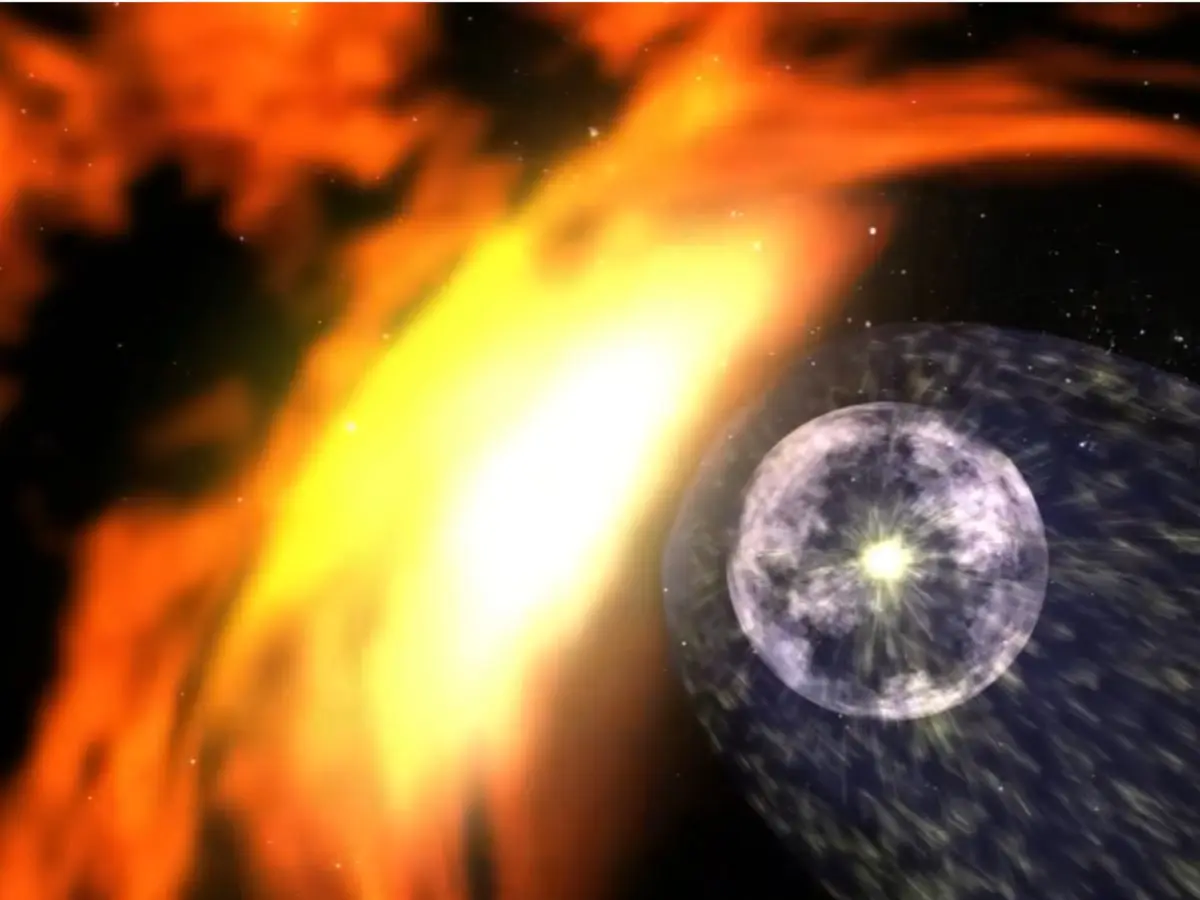Millions of years ago, the solar system may have passed through a cold, dense region of space capable of reshaping Earth’s climate. A 2024 study published in Nature Astronomy proposes that the Sun and planets entered a compact interstellar gas cloud, part of the Local Ribbon of Cold Clouds, with particle densities more than 1,000 times higher than the solar system’s current environment. This encounter could have drastically compressed the heliosphere, the vast bubble of solar wind that normally shields the planets from interstellar radiation.
Geological traces of the isotopes iron-60 and plutonium-244, found in Antarctic snow, deep-ocean sediments, Moon samples, and ice cores, suggest that matter from deep space reached Earth during this period. These isotopes are produced in supernova explosions and neutron star mergers, strengthening the case for a cosmic intrusion.
The heliosphere’s role as Earth’s outermost shield
The heliosphere is created by the constant outflow of charged particles from the Sun, stretching far beyond Pluto’s orbit and typically extending three times farther still. According to NASA, it acts as the solar system’s first line of defence against the interstellar medium (ISM), blocking a significant fraction of high-energy cosmic rays. Earth’s own magnetosphere then provides additional protection, preventing the erosion of the atmosphere and reducing the planet’s radiation exposure.
Today, the solar system sits within the Local Bubble, a region about 1,000 light-years wide containing just 0.001 particles per cubic centimetre, far less than the galactic average of 0.1. The cold cloud encountered millions of years ago, however, may have contained more than 1,000 particles per cubic centimetre, overwhelming the heliosphere’s protective reach and allowing interstellar dust and energetic particles to enter the inner solar system largely unimpeded.
Climate consequences and the long-term view
If the heliosphere contracted within or even inside Earth’s orbit, our planet would have been directly exposed to denser interstellar material. Models suggest this could have altered atmospheric chemistry, depleted ozone in the mid-atmosphere, and triggered global cooling. Such conditions might have persisted for hundreds of years to over a million, influencing climate patterns and potentially shaping human evolution.
As Boston University space physicist Merav Opher notes, this is the first quantitative evidence that the Sun’s interaction with an external object could have affected Earth’s climate. Once the solar system emerged from the cloud, the heliosphere would have expanded again, restoring its full protective range. Scientists estimate that another such encounter could occur within the next million years.
